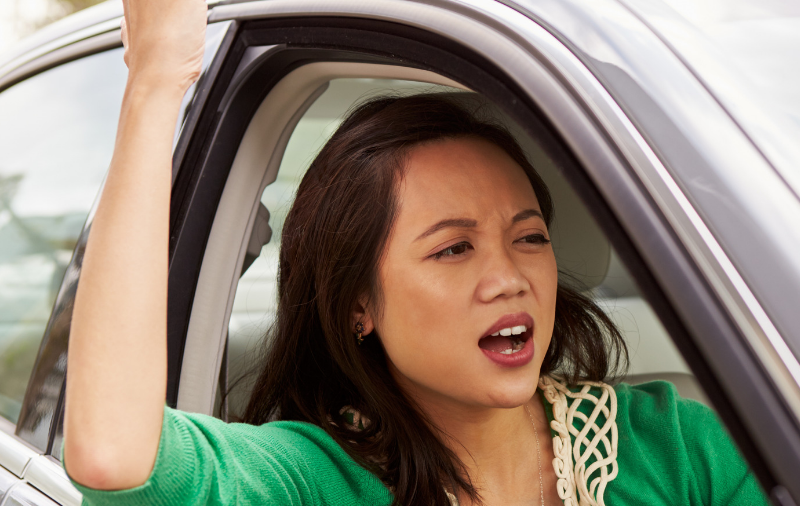Research has shown women are safer drivers than men. They were less likely to die on the roads, take risks or drink drive. But is this still true? If so, does this mean a woman pays less than a man for a green slip?
More men than women die in road accidents
Women make up over half of the NSW population (50.3%) and 45.4% of drivers licence holders. Yet men are still far more likely to die on the roads.
In the year to May 2025:
- 78% of road deaths were male (76% is 3-year average).
- 80% were male drivers, 52% were female drivers.
- 23% of deaths were motorcyclists (95% of motorcyclists are men).
While the media often focus on deaths, more people have serious injuries in road accidents.
More men than women have serious injuries
In the year to September 2024:
- 10,695 people were seriously injured in road accidents in NSW.
- Just over two thirds (67%) were men, similar to last year.
- Motorcyclists had 28% of all serious injuries, up from 26% last year.
Overall, more men than women die or suffer serious injuries in road accidents. Women are more likely to be seriously injured than die in road accidents. However, they have just as many minor injuries as men.
Is the difference in road trauma for men and women linked to age?
Is road trauma associated with age?
In the year to April 2024 in NSW, 80% of deaths in the 17-25 age group were men.
- The age group with the most deaths or injuries was 40-64, then 26-39 for men and women.
- Four fifths of 45-60 year olds were found to be ‘overconfident’ about their driving skills.
- A study of drivers over 65 found men were still indulging in risky driving.
Even so, young people pay more for their green slips because they take more risks on the road than older people. Young men are more likely to crash, and this risk persists even as they get older and become more experienced.
Do men have more road accidents because they spend more time on the roads?
Men spend more time driving
Budget Direct surveyed commuting habits in Australia in 2023.
Men and women are equally likely to drive to work every day (61%) or sometimes work at home (38%). However, the length of commute differed:
- Women did a lot more short trips, 0-15 mins.
- More men had a 45-60 mins commute.
Other research found men work as machinery operators and drivers, technicians or tradespeople, all with the longest average commutes from the outer suburbs.
You have to state how far you drive in a year when getting a quote for a green slip. Distance travelled affects the price.
Are men more willing to take risks while driving?
Men do take more risks than women
A large European 2018 study found it didn’t matter that men drive further than women, but the fact they took more risks while driving. Women were less likely to take risks and less likely to break traffic rules, regardless of how far they drove.
- Men take more risks while driving because they are confident. Around three quarters of men believe they are better than the average driver.
- Only 1% said they were ‘bad’ drivers and 22% said they were average.
Meanwhile, western culture seems to encourage men to take risks. Masculinity is often associated with fast and powerful cars, large utes and 4WDs or driving powerful trucks. When men were asked if they thought they could drive a semi-trailer if they had to, 44% said yes. (Only 4.4% of truck drivers in Australia are women.)
Women tend to anticipate negative consequences and feel less pleasure in taking risks. Interestingly, these gender differences increase even further under stress and driving can often be stressful. Male risk-taking tends to increase under stress, while female risk taking tends to decrease under stress.
Is there any evidence women choose safer cars?
Do women choose safer cars?
In fact, women choose most cars. Women purchase 65% of new cars and influence 80% of buying decisions.
All new cars are fitted with more and more safety features. In fact, female engineers and designers invented or helped develop brake lights, GPS, instruction manuals, rearview mirrors, turn signals, and windscreen wipers. Women enjoy many different aspects of cars but still consider the safety of their children.
In the Women’s worldwide car of the year in 2024, these were the winners:
Volvo EX30 – station wagon
BMW 5 Series – sedan
Kia EV9 – SUV
Volkswagen Amarok – 4×4+pick-up
Aston Martin DB12 – luxury
However, when the jury was asked what women want from their cars, the top feature was safety.
The greenslips.com.au Calculator always asks about your vehicle. While some vehicles are seen as lower risk, your driving habits are just as important for overall risk.
Who gets more distracted while driving?
Both men and women get distracted while driving.
Men tend to overestimate their ability to control circumstances that are mainly influenced by external factors or chance. For example, 15% of men, compared to 9.4% of women, were comfortable using a phone while driving. However, women are more likely than men to reach back to deal with children (or put on make up while driving).
Distraction is difficult to measure as a factor in serious injury or deaths on the roads. But it makes sense that anything that takes attention away from driving is a potential risk.
Are men or women more likely to drink drive?
Men are more likely to drink drive
In Australia, the biggest drink drivers are usually men, but not always. Half of regional women 16-25 said they drink drove in the past 6 months – the highest self-reported rate of all men and women.
- 70% of all fatal drink drive crashes were in country NSW.
- One third of all drink drivers in fatal crashes were 17–24 (yet only one seventh of all drivers).
- Most drink drivers in fatal crashes were male (90%).
When Budget Direct questioned men and women about drink driving, there were differences in risk taking:
- Have you ever driven knowing you might be over the limit? Yes: 17.7% of men and 10.6% of women
- Were there any passengers in the car at the time? Yes: 52.9% of men, 56.4% of women
- Do you know the exact amount of drinks you can have? Yes: 59% of men, 45.8% of women
- Does exercise reduce your alcohol level? Yes: 20.8% of men, 11.4% of women.
Given the picture so far, is comprehensive vehicle insurance cheaper for women?
Comprehensive car insurance costs men more
The Sex Discrimination Act 1984 allows insurers to discriminate on the grounds of gender to set insurance premiums. While some women generally pay less in car insurance, they can also pay more. For example, if a woman has made several claims, she’s more of a risk than a man who has made none.
However, younger men are generally more risky based on claims data:
- Young male drivers under 25 have the highest premiums, averaging $3,020.
- Drivers 25 to 29 pay around $2,176.
- Drivers 30 to 49 pay an average of $1,607.
The reason men make more motor insurance (not CTP greenslips) claims is because they crash more often. Men made 54% of all AAMI claims in the last decade. However, women make 52% of all claims for minor injuries.
Do women pay the same as men for a green slip?
No, there is no gender discrimination in the price of green slips. As at 1 August 2025, men and women paid the same, as long as information about their vehicle and driving history was the same.
greenslips.com.au compared a 45-year old male and female, good and ‘bad’ driver of a Toyota Hilux or Mazda CX5. (The ‘bad’ driver simply has one or more demerits.) There was no evidence gender changes green slip prices.
However, women generally make more claims than men on their CTP green slips:
- The typical CTP green slip claimant is female (54%) and aged 25-39 (30% of all claims).
- In Queensland in the decade to 2024, women made 51.6% of all CTP claims (more claims than men in nearly all age groups).
In fact, there is much more to pricing green slips in NSW than gender.
What does affect your green slip price?
Your green slip prices depend on many factors, including where you live, type and age of vehicle, distance travelled, and ages of vehicle owner and youngest driver. Prices also depend on your driving history, including at-fault accidents, traffic offences, and any licence suspensions.
While women may generally be safer on the roads, the men tragically lost or injured are their fathers, sons, friends or partners. What can be done to encourage men, especially younger ones, to drive more safely?


your opinion matters: